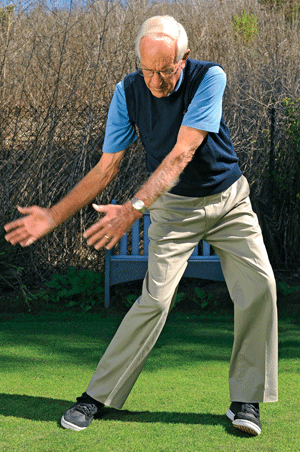pullslice
Travis
Alright, one of my biggest issues is when I substitute hip and shoulder rotation from bending my knee and swaying away from the target. I get super 'handsy' and just kind of slap at the ball.
I will usually fade or slice it from there and lose a ton of distance.
Any tips on increasing flexibility and staying centered over the ball?
I will usually fade or slice it from there and lose a ton of distance.
Any tips on increasing flexibility and staying centered over the ball?









